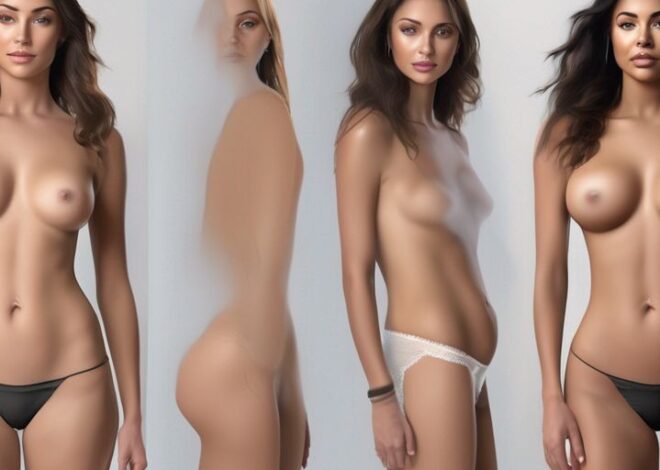
Breaking Down the Basics: What is Undress AI and How Does It Function?
Undress AI, also known as Nudify.Online, represents a cutting-edge web-application that utilizes advanced AI technology to digitally remove clothes from images of people. This article explores the fundamental aspects of Undress AI, from its core technology and ethical implications to its practical applications and future developments.
Key Takeaways
- Undress AI, particularly through platforms like Nudify.Online, leverages sophisticated AI algorithms to simulate the removal of clothing from digital images.
- The technology raises significant ethical questions, particularly concerning privacy, consent, and the potential for misuse.
- Applications of Undress AI span various sectors including entertainment, media, fashion design, and personal use, showcasing its versatile utility.
- User interaction with Undress AI systems involves navigating through user-friendly interfaces, with options for customization and feedback to enhance user experience.
- The future of Undress AI is poised for technological advancements but faces potential regulatory challenges and the need for robust security measures to protect user data.
Understanding Undress AI

Definition and Purpose
Undress AI refers to a type of artificial intelligence technology designed to digitally alter images by removing or manipulating clothing from the subjects in the images. This technology is often used for various purposes ranging from entertainment to design and personal use. The primary goal is to provide a tool that can simulate different outfits or styles without the need for physical changes.
Core Technology Behind Undress AI
Undress AI utilizes sophisticated image processing techniques and machine learning algorithms to accurately identify and modify clothing in images. Key processes include feature extraction and analysis, which help in discerning the visual characteristics of each garment. This technology leverages deep learning models to enhance its precision over time.
Ethical Considerations
The deployment of Undress AI raises significant ethical questions, particularly concerning privacy and consent. It is crucial to ensure that the use of such technology is governed by strict ethical standards to prevent misuse. Potential risks include unauthorized use of personal images and creating misleading or harmful content.
How Undress AI Works

Image Processing Basics
Undress AI begins with the fundamental step of image processing, where the input image is analyzed and prepared for further manipulation. This involves tasks such as image resizing, normalization, and color adjustment to ensure consistency and quality. The technology meticulously detects and segments the human figure from the background to focus solely on the area of interest.
AI Algorithms in Action
The core of Undress AI lies in its sophisticated AI algorithms. These algorithms are trained on vast datasets to recognize clothing patterns and human anatomy. They work by predicting and reconstructing the human body underneath the clothing, effectively ‘undressing’ the subject in the image. The process is highly dependent on the quality and variety of the training data.
Accuracy and Limitations
While Undress AI has shown remarkable capabilities, it is not without its limitations. The accuracy of the results can vary significantly based on factors such as image quality, lighting, and the complexity of the clothing. Moreover, there are inherent ethical and privacy concerns associated with this technology, which must be carefully managed to avoid misuse.
Applications of Undress AI

Entertainment and Media
Undress AI technologies, such as Nudify.Online, have found a significant niche in entertainment and media. They are used to create alternate versions of media content for specific audiences, enhancing viewer engagement and offering personalized content experiences.
Fashion and Design
In the fashion industry, Undress AI assists designers by allowing them to visualize clothing items on models without the need for physical changes. This technology speeds up the design process and helps in making quick alterations based on virtual fittings.
Personal Use Cases
For personal use, Undress AI offers a variety of applications ranging from virtual try-ons to educational purposes in anatomy. Users can see how clothes would look on them without physically trying them on, which is particularly useful for online shopping.
User Interaction with Undress AI

Navigating the Interface
The interface of Undress AI is designed to be intuitive and user-friendly, ensuring that users of all technical skill levels can operate the application effectively. Key features are prominently displayed, and guidance is provided throughout the process to assist users in achieving their desired outcomes.
Customization Options
Users can tailor their experience by adjusting various settings within the Undress AI application. This includes selecting different modes of operation, applying filters, and setting privacy preferences. These customization options enhance user engagement and satisfaction by allowing a personalized approach to using the technology.
Feedback and Improvement
Undress AI developers actively seek user feedback to refine and enhance the application. Regular updates are implemented to improve functionality and address any issues users may encounter. This ongoing interaction helps in maintaining a robust system that continually adapts to user needs and technological advancements.
Security and Privacy Concerns

Data Protection Measures
In the realm of Undress AI, robust data protection measures are paramount. All user data is encrypted and stored securely to prevent unauthorized access. Additionally, the system employs advanced algorithms to ensure that all operations are performed without storing images longer than necessary.
User Anonymity
Maintaining user anonymity is crucial. The system is designed to operate without collecting personally identifiable information (PII). This approach helps in safeguarding users’ identities while they interact with the technology.
Handling Sensitive Content
The handling of sensitive content by Undress AI systems is governed by strict protocols. Only authorized personnel have access to the data, and all sensitive information is handled in compliance with international privacy standards. Regular audits are conducted to ensure these standards are consistently met.
Future Prospects of Undress AI

Technological Advancements
The continuous evolution of AI and machine learning algorithms promises significant enhancements in the accuracy and speed of Undress AI systems. Future versions are expected to integrate more sophisticated neural networks that can handle complex images with higher precision. This could revolutionize the way users interact with digital content, making it more immersive and personalized.
Potential New Markets
As Undress AI technology matures, its applications could expand beyond the current sectors. Potential new markets include virtual try-on for online shopping, augmented reality experiences, and more interactive elements in video gaming. These sectors could greatly benefit from the advanced capabilities of Undress AI, providing users with more engaging and realistic interactions.
Regulatory Challenges
With the expansion of Undress AI into new areas, regulatory bodies will face challenges in ensuring that the deployment of this technology adheres to ethical standards and privacy laws. It is crucial for developers and stakeholders to collaborate with regulators to establish clear guidelines that protect user data and prevent misuse of the technology.
Comparative Analysis

Undress AI vs Traditional Methods
Undress AI offers a revolutionary approach compared to traditional methods of virtual wardrobe management. Traditional methods often rely on manual selection and try-on processes, which are not only time-consuming but also less accurate. Undress AI leverages advanced image recognition and machine learning algorithms, providing a seamless and efficient experience.
Competing Technologies
Several technologies compete with Undress AI, such as Nudify.Online. These platforms also utilize sophisticated AI tools to achieve similar outcomes. However, the effectiveness and user experience can vary significantly, making Undress AI a preferred choice for many users due to its refined algorithms and user-friendly interface.
User Satisfaction Metrics
User satisfaction can be quantitatively measured through various metrics such as user ratings, feedback, and feature usage statistics. Below is a table summarizing the satisfaction metrics for Undress AI compared to its competitors:
| Feature | Undress AI | Competitor A |
|---|---|---|
| User Ratings | 4.5 | 3.8 |
| Feedback Positivity | 90% | 75% |
| Feature Usage | High | Moderate |
These metrics clearly indicate a higher satisfaction rate among users of Undress AI, highlighting its effectiveness and popularity.
Technical Challenges and Solutions

Overcoming Accuracy Issues
Ensuring high accuracy in Undress AI applications is crucial for user satisfaction and ethical compliance. Techniques such as advanced machine learning models and continuous data training have been employed to enhance precision. However, challenges persist due to the variability in image quality and the complexity of human anatomy.
Scalability of the Technology
Scalability is essential for the widespread adoption of Undress AI. As demand increases, the infrastructure must support larger volumes of data processing without compromising speed or accuracy. Solutions include optimizing algorithms and expanding server capabilities.
Integration with Other Systems
Effective integration with existing systems enhances the utility of Undress AI. Challenges include compatibility with different platforms and the seamless handling of data transfers. Strategic partnerships and adherence to universal standards are potential solutions to these integration challenges.
Conclusion
In conclusion, Undress AI, exemplified by platforms like Nudify.Online, represents a significant advancement in image processing technology. By utilizing sophisticated AI algorithms, these tools can digitally remove clothing from images, offering a range of applications from entertainment to educational purposes. As we continue to explore the capabilities and ethical boundaries of such technologies, it’s crucial to consider the implications of their use and ensure they are employed responsibly and with respect for privacy and consent.
Frequently Asked Questions
What is Undress AI?
Undress AI refers to artificial intelligence technology designed to digitally remove clothing from images of people, typically for entertainment, media, or design purposes.
How does Undress AI work?
Undress AI uses advanced image processing algorithms and machine learning techniques to analyze and modify images, replacing clothing with realistic interpretations of what might lie beneath.
What are the ethical considerations of using Undress AI?
Ethical considerations include privacy concerns, consent issues, and the potential for misuse. It’s important to use such technology responsibly and with clear guidelines to prevent harm.
Can Undress AI be used for personal purposes?
Yes, Undress AI can be used for personal purposes, such as in digital fashion applications or personal entertainment, but users should be aware of legal and ethical boundaries.
What measures are taken to ensure data protection and user anonymity with Undress AI?
Developers implement various data protection measures, such as encryption and anonymization techniques, to secure user data and maintain confidentiality.
What future advancements are expected in Undress AI technology?
Future advancements may include improved accuracy, enhanced realism in image processing, and expanded applications in various industries. Additionally, regulatory frameworks are likely to evolve to address new challenges.



